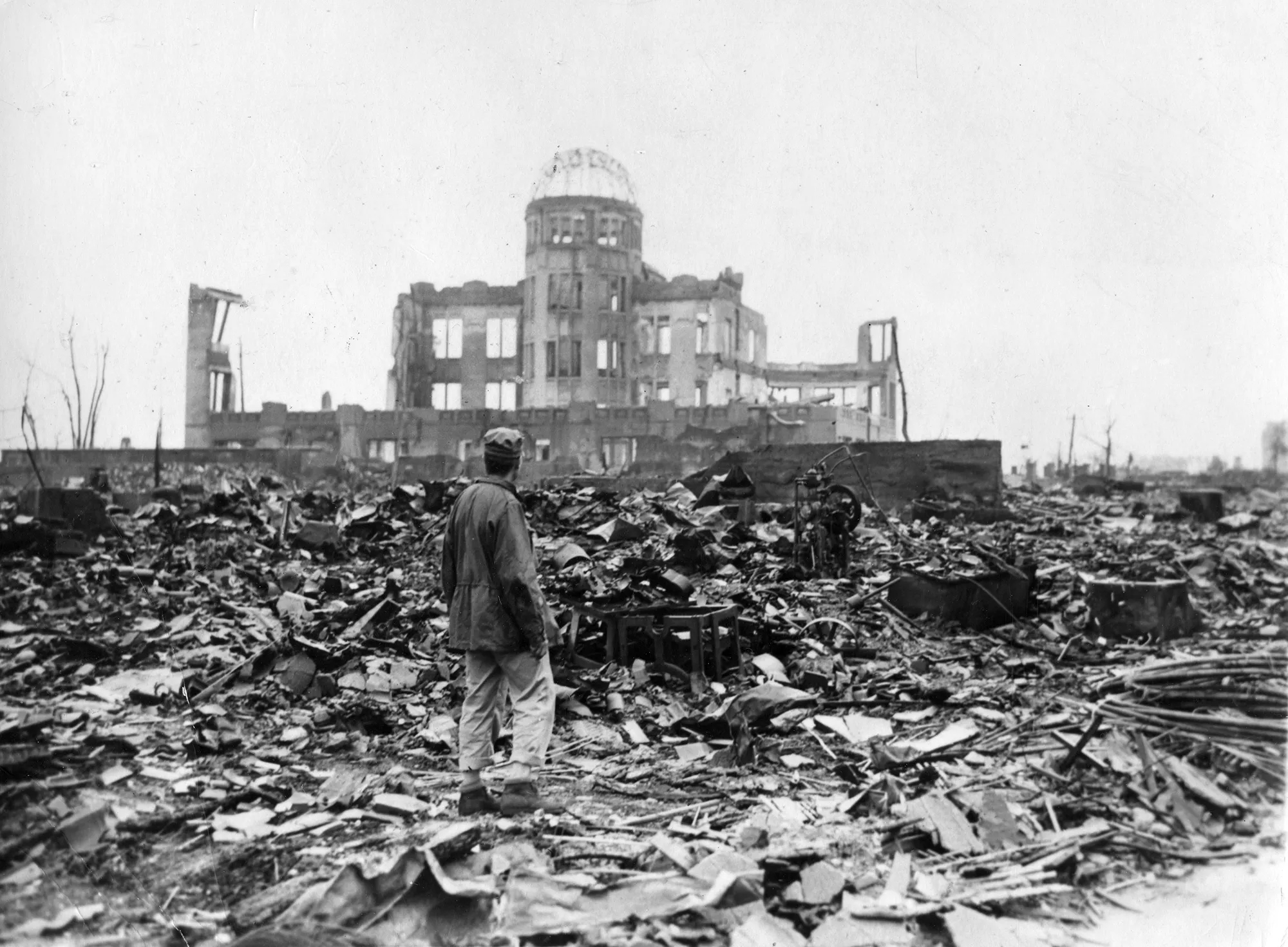The devastating threat posed by the nuclear weapons bombings of Hiroshima and Nagasaki ignited a global dialogue on disarmament and peace
 KRC TIMES Desk
KRC TIMES Desk

Dr. Ashaq Hussain
The true cost of nuclear weapons is not measured in the number of bombs or the stockpiles of warheads, but in the fear and suffering they bring to the world. The devastating power of nuclear weapons was made evident to the world on August 6, 1945, when the United States dropped an atomic bomb on Hiroshima, Japan.
This disaster was a major turning point in history since it not only caused immediate destruction and casualties but also ushered in the nuclear age. The devastating threat posed by the nuclear weapons bombings of Hiroshima and Nagasaki ignited a global dialogue on disarmament and peace.
In light of these tragic events, we must continue to examine the state of nuclear proliferation today, particularly in conflict-prone regions like South Asia and the Middle East, where tensions between Turkey-Israel and India-Pakistan-China continue to pose a serious threat.
To refresh our memory, let me remind that the bombing of Hiroshima had both immediate and long-term effects. The blast, heat, and radiation caused an estimated 140,000 deaths by the end of 1945. The survivors experienced psychological trauma and chronic health problems.
The disaster served as a sobering reminder of how destructive nuclear bombs can be, causing unfathomable suffering to both people and the environment. As a result, the fallout prompted a movement for nuclear disarmament and peace by forcing people to think critically about the ethics and implications of nuclear war on a global scale.
Thus, Hiroshima Day came to symbolize the urgent need to promote global peace and forego the deployment of nuclear weapons.
Let me remind everyone, just to refresh our memories, that the bombing of Hiroshima had both short- and long-term impacts. By the end of 1945, an estimated 140,000 people had died as a result of the bomb, heat, and radiation.
The survivors suffered from long-term health issues as well as psychological anguish. The catastrophe served as a sobering reminder of the unimaginable agony that nuclear bombs may inflict on both people and the environment. With the ability to completely destroy each other, the Soviet Union and the United States spearheaded a global nuclear arms race in the decades that followed World War II.
However, the idea of mutually assured destruction (MAD) evolved into a solemn but stabilizing one that prevented both states possessing nuclear weapons from attacking one another. There is still a possibility of nuclear conflict, and more than a dozen countries now possess nuclear weapons.
The proliferation of nuclear technology, the escalation of new geopolitical conflicts, and the potential for nuclear terrorism all pose serious threats to global security.
The India-Pakistan conflict, which China is trying to stoke, is one of the world’s most dangerous nuclear flashpoints right now. These countries have a history of military confrontations and a sizable arsenal of nuclear weapons, with the disputed regions of northeast India, Kashmir, and Ladakh being the main focal points.
Both India and Pakistan conducted nuclear tests in 1998, which heightened tensions and raised the prospect of a devastating war. The complex geopolitical environment in the region which is marked by historical grievances, territorial conflicts and competing national interests is still the reason for its instability.

These nations have been on the verge of war on multiple occasions in the past few years. For example, tensions increased significantly after the 2019 Pulwama attack and the accompanying Balakot airstrike. Conflict between China and India on the Line of Actual Control in Galwan in 2020 is another instance that seriously damaged relations between the two nations.
The two nuclear-armed Asian neighbors have already engaged in violent altercations; China is attempting to sabotage peace with the conflicts that occurred in December 2022 near the Tawang area of the state of Arunachal Pradesh. In addition, with regard to the Iran-Israel dispute, nuclear tensions are currently a significant problem in the Middle East too.
Israel, which is thought to be in possession of nuclear weapons, believes that Iran poses an existential threat although Iran maintains that its nuclear program is for peaceful purposes. This standoff has led to a dangerous and complex geopolitical chess match that could have catastrophic outcomes.
So, finding a peaceful settlement is much more important in this area too since there is a genuine risk of nuclear war. The lessons from Hiroshima thus, underscore the importance of diplomacy, communication, and international cooperation in preventing a nuclear tragedy.
To add more to this, today, many hidden pockets in different parts of the world faces a complex geopolitical landscape, with multiple nations possessing nuclear capabilities. This development or acquisition of nuclear weapons by a number of other nations, in addition to the original nuclear powers, has complicated attempts towards a genuine chance of nuclear war, which emphasizes how important it is to find a peaceful resolution.
So under these circumstances, the Hiroshima day is a call to action. It encourages us to remember the history and work hard to prevent the use of nuclear weapons in the future. A society really free of nuclear weapons can only be achieved by means of this mission.
In regions such as South Asia and the Middle East, where tensions are high and conflict is a real possibility, it is critical to establish and maintain open lines of communication, encourage confidence, and take part in constructive dialogues.
Tensions between nations can be managed with the use of confidence-building programs like nuclear risk reduction centers, hotlines, and agreements on no-first-use principles. Similarly, diplomatic outreach and regional cooperation on issues like economic development and security could help to reduce tensions.
In conclusion, for the benefit of all future generations, the memory of Hiroshima serves as a potent reminder of the necessity of a nuclear weapons-free world. So, let us remember the horrific consequences of nuclear bombs as we approach Hiroshima Day and stress how important it is to work for a society free of such threats.

Lets us agree that cooperation, a commitment to communication, and a shared respect for human life are the cornerstones of a peaceful world. To make tragedies stop happening, the international community must continue to press for nuclear disarmament and peaceful conflict resolution.
Let us reflect on the past, confront the challenges of the present, and resolve to work for a future free from the threat of nuclear weapons. As global citizens, we must cooperate to make sure that the lessons from Hiroshima result in a more safe and tranquil world where the atrocities of nuclear war are never repeated.
(The author is Associate Professor Chemistry at Govt Gandhi Memorial (GGM) Science College,)


